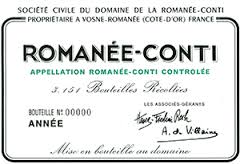by Wine Owners
Posted on 2017-02-06
Let me first put my hand up and say I’m a fan of 2014 as a Burgundy vintage. It seems to me to be a year of rather lovely balance across the board. No doubt with exceptions, it’s a vintage to buy as high up the qualitative tree as you can afford, quite unlike 2015 where the hot summer provided a metaphorical leg up to wines on cooler, less exposed sites and colder soils.
Adam Brett-Smith, Managing Director of Corney & Barrow the UK exclusive agent for DRC, describes 2014 as the ‘happy vintage’ but warns that it’s easily underestimated. I do agree. The wines may be ‘on the fruit’ and correspondingly expressive, but there’s sufficient fine-grained structure, dry extract and acidity to see the wines develop over the medium to longer term.
The ability of Burgundies to age from classic or un-showy vintages seems consistently under-called by wine critics, especially where there’s a degree of natural concentration through moderate or normal yields, which seems to make a big difference to the finickety nature of Pinot Noir. 2014 should age effortlessly for 15-20 years.
TASTING NOTES
Corton
Warm, red fruited nose. An expressive, spiced attack with nice energy and a twist of licorice. A degree of firmness merely hints at the character of the archetypal Corton appellation (although there is huge variation between the various Corton soils) and leads into a giving, fruity finish.
Échézeaux
An inviting yeasty nose, in turn earthy and creamy. Once again, a degree of firmness that’s overridden by open, expressive, croquant fruit. It’s a wine that pinotents – delivering the essence of Pinot Noir, into a finish that’s framed with an orange citrus cut.
Grands Échézeaux
A fresher nose, vinous and earthy. There’s greater complexity, finely balanced with a bit more structure, more defined and an elemental, vinous character. On its reserve for now, with a freshness and depth that tempts a prediction of a great GE.
Romanée-St-Vivant
Sweet pastille fruit on entry, less evident grip, more expressive with greater mid palate volume. Super upfront fruit with a fine grained back palate. Freshness kicks in on the finish with good persistence.
Richebourg
Liquory aromas rise from the glass. Power comes through on the nose but paradoxically there’s a balancing restraint to it. Greater intensity than preceding wines, much less up-front fruit but with a bit more torque - progressive, earthy and very complex. Flashes of fruit push through, towards a grainy back palate with building intensity. Real grip and substance with old vine character.
La Tâche
Another step up, right now it presents as a more chiselled form of the Richebourg, a rather elegant and cushioned expression of La Tâche at this early stage. There’s lots of latent power and a sense of reserve on the back palate with a long and persistent finale.
Romanée-Conti
Expressive nose of fruit, earth, and a greater sense of minerality. Powerful yet very refined. Darker character, with a brightly illuminated outline to the dark fruit. A controlled finish with fine-grained grip and a sense of penetrating depth.
by Wine Owners
Posted on 2015-02-09
The morning after the night before, following a DRC dinner led by Aubert de Villaine in the wonderful setting of the Cutty Sark in Greenwich. The two stars of the evening had been a mind-blowing Batard-Montrachet 2000 that kept expanding with time in the glass, and La Tache 1991.

The 2012s presented a contrast to the more delicate, ethereal 2011s. These were firmer wines with iron-infused finishes. Darker-veined, rooted in a firm mineral character in contrast to 2011's brighter, airienne nature.
The Echezeaux was a great deal more open than the Grands Echezeaux, with less grip but enticing acidity. A dark streak of fruit, developing freshness and lift, carried forward. Lovely progression and really salivant.
Grands Echezeaux showed a darker character and a creamy trim. Firm and savoury, a licorice mid-palate, grainy and grippy with a similarly firm, iron finish.
Whereas RSV 2011 seemed more complex and coiled than Richebourg of the same vintage, in 2012 the reverse seemed true:
Richebourg exhibited a heady nose, deep and figgy, with great intensity on the palate. A big core of fruit and a firm, closed, iron finish.
RSV's nose was rather far less visceral, but sweet as fruit-gums, direct and joyful. On the palate the wine was more elemental with a sense of breadth, and a tongue-numbing licorice intensity ahead of a firm finish.
La Tache was a corresponding step up from the Richebourg. A perfumed nose set it apart from the preceding wines, at once ethereal and creamy. Very powerful entry, great intensity, a touch of iodine and iron framing a firm finish.
Romanée-Conti was equally perfumed but more focused. A palate of enormous, uncontainable volume. Such depth, whilst citrus notes and a lifted finish provided the perfect counterweight to a profound wine.

